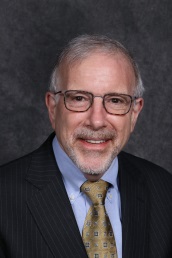
Robert A. Wynbrandt, Executive Director & General Counsel
STS News, Summer 2018 -- On April 29 in San Diego, the Society conducted its 14th annual leadership orientation, which featured both surgeon leaders and our staff management team and addressed all aspects of STS structure and operations. This year’s production was particularly geared toward those cardiothoracic surgeons and allied health care professionals who were new to STS governance, and we had a packed house.
Don’t worry; this column will not be a condensed version of STS Orientation 101 for the masses. It is, however, dedicated to the STS core value of teamwork, which is a topic that I annually emphasize in the “STS governance” portion of the program. The thesis of my presentation, in which I implore a group of energized volunteers to “Respect the Bus,” is that we are a complex organism (the bus), fraught with opportunity for inefficiencies and friction absent an exceptionally high degree of communication, especially between our volunteer leadership and staff, i.e., the partnership engine that makes this organizational bus run.
When I was hired in 2002, as the Society ushered in its “era of self-management,” one of my primary objectives, supported by Mark Orringer, Bill Baumgartner, Gordon Murray, and Robert Guyton (all ultimately STS Presidents), was to reorient the Society’s staff from what had been perceived as a “silo” mentality and help create a culture of interdependence. This task of building a culture of “we” among professionals of any type is inherently difficult—particularly when you are dealing with high achievers who aim to do great things for an organization and be recognized for their contributions; it requires constant reinforcement.
There is undoubtedly a parallel dynamic in the world of cardiothoracic surgery, where the surgeon is the quintessential captain of the operating room ship—where the proverbial buck stops and a deep sense of personal responsibility for the procedure and the patient’s outcome is paramount. And yet it is undeniable that these past 16 years have evidenced a growing respect for, and acknowledgement of, the entire team—in hospitals and surgical groups throughout the world. This enhanced appreciation for the team is mirrored in the operations of your society.
Our organizational culture of “we” transcends international boundaries.
The STS focus on “team” has never been more pronounced, touching all three prongs of our mission to “enhance the ability of cardiothoracic surgeons to provide the highest quality patient care through education, research and advocacy.” A recent and important example that many of you are aware of through our various e-publications occurred in the advocacy arena on July 25, when STS Past President Joe Bavaria led a group of cardiothoracic surgeons and cardiologists, representing STS, the American Association for Thoracic Surgery, the American College of Cardiology, and the Society for Cardiovascular Angiography and Interventions, i.e., the organizational personification of the heart team, in presenting testimony before a Medicare Evidence Development & Coverage Advisory Committee panel regarding the balancing of access and patient safety interests in the federal regulation of TAVR procedures. In education, the interdisciplinary team is now featured in an ever-growing segment of our portfolio, e.g., at our recently completed ECMO and robotics courses, as well as our upcoming critical care conference, and of course at the ever-popular AQO meeting, our annual educational program solely devoted to the STS National Database. And speaking of AQO, the team is a growing focus of our National Database, where we expanded our scope earlier this year to incorporate the heart team dependent INTERMACS® registry; this extends to our PUF initiative, which allows cardiothoracic surgeons and their research scientist colleagues to pursue the STS research mission by mining the STS National Database for new discoveries that will take us to the holy grail: the highest quality patient care. And lest we forget, our organizational culture of “we” transcends international boundaries, as the Society collaborates with a growing number of organizations outside the United States to conduct and endorse educational offerings for the specialty throughout the world; keep an eye on www.sts.org for details.
I’ve been reflecting a lot about all dimensions of our STS team since April 29, also the date on which I announced to our Board of Directors that I will be stepping down as the Society’s Executive Director & General Counsel in March of next year. (And in that regard, please be assured that a committee already has been formed to conduct a search for my successor; our retention of a search firm tasked with assisting that committee likely will have been completed by the time that you read this column; and the search process will be in full gear before the fall 2018 edition of STS News hits your inboxes and desks.) That team concept was brought home eloquently by our President, Keith Naunheim, at the conclusion of the April 29 orientation session in San Diego. Perhaps unconsciously channeling Sister Sledge and the theme song of the 1979 world champion Pittsburgh Pirates, Keith closed with a reference to the Society as a family: the ultimate culture of “we.” With that as a fundamental cornerstone of our organizational DNA, as reflected in our stated core values and brought to life as we execute on all facets of our mission, the Society and the specialty that it is designed to reflect and serve are both on a great path for the future.